
Living in the Invisible Safety Bubble
The Invisible Safety Bubble: What This Means and How to Detect When You Are Living in Denial After Trauma
Primary Category: Scam Victim Recovery Psychology // Living in the Real World
Author:
• Tim McGuinness, Ph.D., DFin, MCPO, MAnth – Anthropologist, Scientist, Polymath, Director of the Society of Citizens Against Relationship Scams Inc.
About This Article
The safety bubble is a mental state your mind creates after trauma to protect you from overwhelming emotions, but it often traps you in denial and leaves you vulnerable to future harm. When you live inside this bubble, you convince yourself that you are fine, that the danger is over, and that you do not need to think about risk anymore. This false sense of security feels comforting, but it prevents you from processing your trauma fully and blinds you to real-world dangers. Learning to detect the safety bubble involves watching for patterns like avoidance, emotional numbness, overconfidence, and rigid thinking. It also requires listening to trusted feedback, tracking your behaviors over time, and practicing mindful discomfort. By becoming aware of the safety bubble and how it shapes your thoughts, you allow yourself to step out of denial and into real recovery. That shift lets you build lasting resilience based on awareness, not illusion.
Note: This article is intended for informational purposes and does not replace professional medical advice. If you are experiencing distress, please consult a qualified mental health professional.
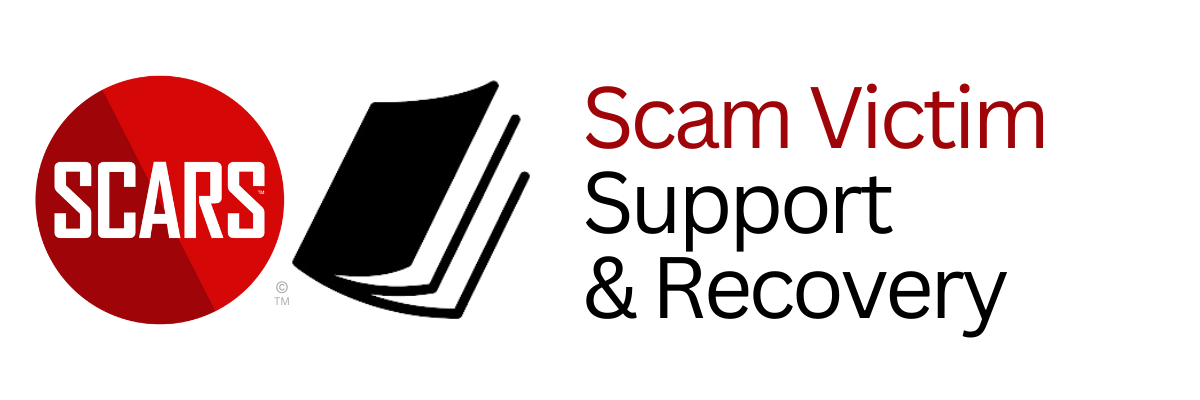
The Invisible Safety Bubble: What This Means and How to Detect When You Are Living in Denial After Trauma
The safety bubble is a self-created mental state that forms after trauma, where you convince yourself that you are fully safe, healed, or immune to future harm. It feels like protection, but in reality, it is often a false sense of security that hides unresolved pain and leaves you vulnerable to new risks.
Introduction
When you experience psychological trauma, your mind quickly moves into survival mode. It does this to keep you functioning, to help you get through the immediate crisis, and to protect you from emotional collapse. One of the ways it accomplishes this is by creating what psychologists sometimes call a compartmentalized bubble of safety. This bubble is not something you choose consciously. It forms automatically as part of your trauma response. Your mind builds a mental space where you tell yourself, “I am fine now,” or “That can never happen to me again.” You might even believe, “I have already healed, so I do not need to think about this anymore.” These thoughts feel comforting. They give you a sense of relief and control. The problem is that they are not always true.
” It’s a universal translator. We’re not even supposed to have it. I’ll tell you why. Human thought is so primitive it’s looked upon as an infectious disease in some of the better galaxies. That kind of makes you proud, doesn’t it?”
– Men in BlackIn other words, our own thoughts can sometimes be our worst enemy, but they are all we have, so we need to guide and control them.
This mental safety bubble often traps you in denial. It gives you a false sense of security that protects you from short-term emotional pain but leaves you vulnerable in the long term. You might stop looking for hidden risks. You might ignore warning signs. You might refuse to revisit painful memories, not because you have processed them, but because you have pushed them aside. That is how the safety bubble turns into a safety delusion.
The most dangerous part of this bubble is that you usually cannot see it from the inside. Because your own mind built it, you tend to believe it without question. It becomes invisible to you. You may feel peaceful or confident, but underneath the surface, you are still avoiding parts of your experience that need attention.
The good news is that you can learn to detect this bubble. You can train yourself to recognize the signs that you are living in denial, even if it feels like healing on the surface. This process is not about punishing yourself or forcing emotional pain before you are ready. It is about gaining awareness. When you understand how your mind works after trauma, you give yourself the tools to recover fully. You move from surviving to genuinely healing. You stop living in a false version of safety and start building real emotional resilience.
“You’re standing between me and my memories, pal.”
– Men in Black IIYou can take control, but first you have to be aware.
You can do this in a step-by-step, mechanical way. The goal is to help you observe your thoughts, feelings, and behaviors without judgment. By using these tools, you can break out of the invisible safety bubble and begin living with clarity, presence, and authentic strength.
How the Mind Creates the Safety Bubble
After trauma, your mind prioritizes survival. When you experience betrayal, exploitation, or psychological harm, your brain responds by activating both emotional and neurological defense systems. These systems are not choices you make consciously. They are automatic reactions designed to keep you alive, even if they distort reality in the process. One of the most common outcomes is the creation of what feels like a safety bubble. This is a mental and emotional space where you tell yourself that the danger is over, that nothing like this can happen again, or that you are finally safe from harm.
“Sir! Sir, you can’t do that…! Don’t ‘Sir’ me, young man, you have no idea who you’re dealing with!”
-Men in BlackIn other words, we are stubborn and our minds do what it thinks is best regardless of what is actually good for us. Most of the time, we have no idea this is going on.
At first, this safety bubble may actually help you stabilize. Your mind cannot process trauma all at once. If you tried to face everything immediately, you would risk emotional collapse. The brain protects you by compartmentalizing pain. It gives you a psychological pause button so that you can continue functioning. This is part of what psychologists call defense mechanisms. These include denial, repression, dissociation, and minimization. Your brain uses these tools to reduce distress and prevent overwhelm. This is not weakness. It is a normal human response to trauma.
“All right, Beatrice, there was no alien. The flash of light you saw in the sky was not a UFO. Swamp gas from a weather balloon was trapped in a thermal pocket and reflected the light from Venus.”
– Men in BlackIn other words, we lie to ourselves all the time to make us feel safe. However, the monsters are real and all around us, like circling worlves hunting a baby deer.
Neurologically, this happens because trauma activates the amygdala, the part of your brain responsible for detecting threat. When the amygdala stays overactive, you experience hypervigilance and emotional exhaustion. Your brain cannot stay in high alert forever. To compensate, it shifts into a protective mode. The prefrontal cortex, which helps you think logically and plan for the future, starts creating narratives to explain why you are now safe. These narratives are part of what builds the safety bubble. They reduce anxiety by giving you simple answers like, “That will never happen to me again,” or “I have learned my lesson and I am now immune.”
“We’re your first, last, and only line of defense. We live in secret, we exist in shadow. And we dress in black.”
– Men in BlackYour mind does not let you know it is doing these things. It just wants you to be happy.
Your nervous system also plays a role. Trauma dysregulates your autonomic nervous system. You swing between hyperarousal, where you feel anxious, panicked, or on edge, and hypoarousal, where you shut down emotionally. To break this exhausting cycle, your mind settles into a state of numb reassurance. You tell yourself that you are safe because your system cannot tolerate staying in survival mode permanently. This becomes the false safety zone. It feels peaceful at first, but it hides unprocessed trauma underneath.
Psychologically, the safety bubble often forms through cognitive biases. These are mental shortcuts your brain uses to reduce mental strain. One example is confirmation bias. You start looking only for signs that confirm you are safe and ignoring signs that suggest you are still vulnerable. Another is normalcy bias. You convince yourself that because life seems normal again, everything must actually be normal, even if deeper emotional wounds remain.
“Bugs thrive on carnage, Tiger. They consume, infest, destroy, live off the death and destruction of other species.”
– Men in BlackIn other words, criminals do crime because it is what they do. Never forget that. Never ignore that. That is the reality that will help to keep you safe.
The mind also uses memory suppression to protect you. The hippocampus, which stores and organizes memory, sometimes blocks traumatic details to reduce emotional overload. This leads to gaps in your narrative. You forget parts of what happened, or you remember it in a softened version. Over time, this creates an internal story that supports the illusion of complete recovery. You stop questioning whether you still carry trauma because your mind edits the story to protect your sense of stability.
This process is not about deception. It is about survival. Your brain wants to keep you safe, but sometimes it chooses comfort over truth and reality. The safety bubble becomes a shield that prevents you from re-experiencing pain. Unfortunately, if you stay inside this bubble too long, you stop growing. You stop building resilience. You avoid fully examining your vulnerabilities, which leaves you at risk of repeating past mistakes or falling into new traps.
“I go out, I work my butt off to make a living, all I want is to come home to a nice clean house with a nice fat steak on the table, but instead I get this.”
– Men in BlackThe safety bubble is there for your comfort, not your safety.
Understanding how the safety bubble forms helps you break the cycle. When you know that this is a neurological and psychological response, not a personal failure, you can approach it with compassion and awareness. The goal is not to destroy the bubble harshly. It is to gently examine it, understand why it exists, and begin the work of living outside of it, fully awake to both life’s dangers and its possibilities.
How to Detect and Overcome the Safety Bubble
When you are living inside a trauma-induced safety bubble, you usually cannot see it from the inside. Your mind created the illusion to protect you, so it will defend it without your conscious awareness. However, you can learn to detect the bubble by paying close attention to your thinking patterns, your emotional reactions, and your habits. This process is not about tearing down your sense of safety. It is about learning to build real safety based on awareness, not illusion.
You can use specific mental checkpoints to discover if you are living in a false sense of security. Once you spot the signs, you can begin the process of stepping out of the bubble and reconnecting with reality. That does not mean you give up feeling safe. It means you replace the fragile illusion of safety with authentic resilience and clarity.
“Look, kid, to keep the bugs from getting it, the Arquillians WILL destroy that galaxy.”
– Men in BlackIn other words, are you prepared to do what you need to, to keep yourself and your family safe? Or are you living in denial, a safety bubble of your own making?
1. Watch for Absolutist Thinking
One of the most common warning signs of a trauma safety bubble is absolutist thinking. This happens when you believe or declare that something is completely true, completely false, or fully under control. After trauma, especially betrayal trauma like a scam, your mind wants to avoid uncertainty. It tries to create mental safety by simplifying the world into black-or-white categories. You may start to tell yourself things like “That could never happen to me again, or I am totally fine now,” or “I know exactly how to avoid this in the future.” These statements feel good because they calm your mind. They give you a sense of closure. Unfortunately, they are rarely accurate.
Life is not black and white. It is not safe to assume that you are completely protected from future harm. No one is. Believing that you have absolute control is comforting, but it usually signals a defense mechanism rather than a reality check. If you catch yourself making these kinds of sweeping statements, stop and examine them. Ask yourself, “Why do I need this to be true?” Often the answer is, “Because I feel safer if I believe it.” That is a normal response to trauma, but it can keep you trapped in denial.
“You don’t want to eat me. I’m a very important person on my planet. Like a queen, a goddess even. There are those who worship me. I’m not saying this to impress you, I’m just warning you it could start a war.”
– Men in BlackYour mind will try to look at things in simple terms, and then negotiate with you to keep you happy.
You might also notice absolutist thinking in how you judge others. If you hear yourself saying, “Only stupid people fall for scams,” or “I will never trust anyone again,” you are probably creating mental walls to feel safer. These walls protect you from emotional pain, but they also isolate you from growth. They prevent you from learning from experience and from building balanced trust in the future.
Absolutist thinking ignores the reality that life involves risk, uncertainty, and complexity. No one can guarantee that they will never be fooled again. No one is always fine or fully immune to emotional manipulation. Healthy recovery involves accepting this without fear. When you stop trying to force the world into black-or-white categories, you give yourself permission to live in the real world again. You can still protect yourself. You can still set boundaries. However, you do those things with clear eyes, knowing that vigilance and humility are part of lasting safety.
To break free from absolutist thinking, practice using more flexible statements. Say things like “I am stronger now, but I still need to stay aware,” or “I am healing, but life still has risks, and that is okay.” These kinds of thoughts help you step out of the safety bubble without overwhelming yourself. They allow you to build real confidence that is based on growth, not denial.
2. Look for Avoidance Patterns
Another important way to detect if you are trapped in a trauma safety bubble is by looking for avoidance patterns in your daily life. Avoidance is one of the brain’s most common defense tools after trauma. It helps you feel immediate relief from anxiety, stress, or emotional pain. In the short term, avoidance can seem helpful because it stops you from feeling overwhelmed. However, when avoidance becomes a habit or a lifestyle, it becomes a warning sign. It usually means you are living inside a protective illusion instead of facing reality.
“Searching for a handle on the moment? I can’t help you. The only comfort I can offer… is my promise that tomorrow morning you won’t remember a thing.”
– Men in BlackYour mind will compartmentalize and you will not remember what you need to remember for your own safety.
Ask yourself direct questions. “Are there certain topics you refuse to think about?” If the answer is yes, that is a clue. Scam victims often avoid thinking about the details of how the scam happened. You might find yourself saying, “I just do not want to go there again, or It is too painful to think about.” This is understandable, but it can also keep you stuck in denial. When you refuse to review the past, you block yourself from learning what really happened. You stay blind to the tactics used against you, which leaves you vulnerable to similar risks in the future.
Consider whether you are avoiding certain places, people, or conversations. You might skip support group meetings because they make you uncomfortable. You might avoid talking to friends or family about your recovery because you do not want to feel judged. You might refuse to read articles or listen to discussions about scams because they trigger memories. Avoiding these things protects your emotions in the moment, but it also keeps you from moving forward. It stops you from building the knowledge and resilience you need to fully heal.
“There’s always an Arquillian Battle Cruiser, or a Corillian Death Ray, or an intergalactic plague that is about to wipe out all life on this miserable little planet, and the only way these people can get on with their happy lives is that they DO NOT KNOW ABOUT IT!”
– Men in BlackWe create our safety bubble to get through the day but it does not keep us safe. Only by seeing reality can we truly adapt to it.
Another form of avoidance happens inside your own mind. When intrusive thoughts or painful memories try to surface, do you immediately change the subject in your head? Do you distract yourself with television, scrolling your phone, or staying busy to avoid thinking about the trauma? This pattern might feel like coping, but if it becomes automatic, it is part of the safety bubble. Your brain is trying to maintain the illusion of safety by shutting out anything that feels threatening, even if it is necessary for healing.
Avoidance is natural after trauma, but when it controls your life, it becomes a trap. The longer you avoid reality, the stronger the bubble gets. Over time, you may start to believe you are fully recovered when you are actually stuck in emotional denial. To break this pattern, start small. Allow yourself to think about difficult topics for just a few minutes at a time. Write down your thoughts without judgment. Talk to a trusted person about your feelings, even if the conversation is uncomfortable. Each time you face what you want to avoid, you weaken the bubble and build true resilience. This is not about forcing yourself into pain. It is about learning to live in reality without fear.
3. Test for Emotional Numbness
Emotional numbness is one of the most common signs that you are living inside a trauma safety bubble. After betrayal trauma, especially from something like a scam, your nervous system may choose to shut down emotional processing as a way to survive. This is not a conscious choice. It happens automatically because your brain perceives emotions as dangerous. You might tell yourself, “I am fine, or I am over it,” when in reality, you are stuck in a state of emotional flatness. You are not calm because you have healed. You are calm because you have frozen your emotional response.
You can test for emotional numbness by asking yourself specific questions. “Do I still feel joy, sadness, or excitement in everyday life?” If you do not, that is a sign of emotional shutdown. Life is supposed to include a range of emotions. You should feel pleasure when something good happens. You should feel sadness when something painful occurs. If you feel nothing in both situations, your nervous system may be stuck in protective mode. This happens because the brain sometimes decides it is safer to feel nothing than to risk feeling everything.
“Ladies and gentlemen if you will, look right here.”
– Men in Black IIIPay attention to what you feel and think!
Another question to ask is, “Do I experience real emotional connection, or am I just going through the motions?” Trauma can create a wall between you and other people. You might smile, talk, and even laugh in social situations, but inside, you feel detached. You might say, “I am doing fine,” while secretly feeling empty. This is not emotional regulation. It is emotional numbness. The difference matters because true healing involves connection, vulnerability, and real engagement with life.
You should also ask yourself, “Do I feel disconnected from events that should matter to me?” For example, if someone you love shares good news, do you celebrate with them emotionally, or do you just say the right words without actually feeling the joy? If something upsetting happens in the world or in your community, do you feel empathy and concern, or do you brush it off with thoughts like, “I do not care anymore?” These reactions are signs that you might be living in a freeze state. You are not protecting yourself by staying numb. You are cutting yourself off from life.
“Last chance: Who are you and what do you know?”
– Men in Black IIIExplore your memories and what you feel.
Emotional numbness often feels like relief in the short term because it blocks pain. However, it also blocks happiness, connection, and growth. When you freeze your emotions, you cannot fully participate in life. You cannot build new experiences or trust yourself again. Healing requires you to unfreeze slowly. You can start by noticing your feelings without judgment. Write them down. Let yourself cry if you need to. Let yourself laugh if something feels funny. These small steps help you move out of the bubble and back into real emotional living. Emotional numbness is not a sign of strength. It is a signal that you have more healing to do.
4. Watch for Safety Euphoria
Safety euphoria is a subtle but dangerous phase that often happens after trauma. It feels like relief, but it is actually denial in disguise. When you experience safety euphoria, you believe you are completely safe, invincible, or immune to future harm. You do not feel fear, but that is not because the world is safe now. It is because your mind has convinced you to stop thinking about danger altogether. You ignore safety planning. You avoid thinking about risk. You tell yourself, “That part of my life is over,” or “Nothing like that will happen to me again.”
In safety euphoria, you often stop practicing basic awareness. You do not carry anything for self-defense. You walk alone in parking lots late at night without looking around. You stop noticing who is near you or what is happening in your environment. You leave your doors unlocked. You assume that because you feel good, you are protected. This is not conscious recklessness. It happens because your brain wants to experience relief from fear. After trauma, your mind sometimes swings to the opposite extreme. You go from hypervigilance to total relaxation, but without passing through healthy awareness.
Safety euphoria can also show up in your emotional thinking. You may tell yourself, “The world is good again,” or “People are basically kind, so I do not need to worry anymore.” These thoughts feel positive, but they can lead to dangerous situations. Scammers, predators, and manipulators look for people who have let their guard down. They recognize when someone is no longer paying attention. They see it in your body language, your decisions, and your habits. Safety euphoria makes you an easy target because you stop thinking about personal safety as a skill you need to maintain.
“A person is smart. People are dumb, panicky dangerous animals and you know it. Fifteen hundred years ago everybody knew the Earth was the center of the universe. Five hundred years ago, everybody knew the Earth was flat, and fifteen minutes ago, you knew that humans were alone on this planet.”
– Men in BlackIn other words, a person can be kind, but people include monsters all the time.
You can test for safety euphoria by asking yourself simple questions. “Do I have any safety practices in my daily life?” If the answer is no, that is a red flag. “When was the last time I thought about risk management?” If you cannot remember, that suggests you may be living in denial. “Do I believe bad things only happen to other people now?” If you do, you may have replaced healthy caution with false optimism. If you answer “Yes, but,” you are living in a safety bubble – the equivocation gives it away.
“Imagine a giant cockroach, with unlimited strength, a massive inferiority complex, and a real short temper, is tear-assing around Manhattan Island in a brand-new Edgar suit. That sound like fun?”
– Men in BlackThe monsters are real and always out there.
It is important to understand that safety is not about paranoia. You do not need to live in fear. However, you do need to live with awareness. Healthy recovery includes both trust and preparation. You can enjoy life while still taking basic steps to protect yourself. Look around when you are in public spaces. Set boundaries with people who make you uncomfortable. Keep tools with you that help you stay safe. Real peace comes from balanced thinking, not from pretending the world has no risks. Safety euphoria feels good, but it leaves you exposed. Awareness keeps you safe without stealing your joy.
Examine Your Reactions to Small Threats
When you live inside a trauma safety bubble, your sense of threat becomes distorted. Small issues either feel much too big or they feel so insignificant that you ignore them completely. This happens because your internal alarm system is out of balance. Trauma alters how your brain processes risk and safety. You may not notice it at first because the shifts are subtle. However, over time, this distorted thinking can create real problems in your life.
One sign of this is overreacting to minor stressors. For example, a small disagreement with a friend might leave you feeling panicked or overwhelmed. You might respond with sudden anger, withdrawal, or emotional collapse. Your mind treats the conflict as if it were life-threatening, even though it is not. This happens because part of you is still stuck in survival mode. Your nervous system cannot tell the difference between small stress and real danger. Your trauma bubble turns everyday problems into emotional emergencies.
“There are things out there you don’t need to know about. That’s not the lie you told me when you recruited me!”
– Men in Black IIIRemember, you are in control, but your mind thinks that it is.
On the other hand, you might also underreact to real threats. You may dismiss warning signs that should get your attention. Someone crosses your boundaries, but you tell yourself, “It is no big deal.” You ignore health problems, safety risks, or financial concerns because your mind has learned to minimize stress at all costs. This false calm feels like control, but it is really another layer of denial. You avoid dealing with things that might break your illusion of safety.
To check whether this is happening, pay attention to how you respond to small conflicts or problems. Do you panic when things go slightly wrong? Do you pretend everything is fine when you should be taking action? Balanced thinking means you can see problems for what they are, no more and no less. Emotional recovery includes learning to calibrate your responses again. You need to learn when to act, when to rest, and when to ask for help without swinging between extremes.
“You did not see a room full of shiny weapons, you did not see four alien night crawlers. You will love and cherish each other for the rest of your life.”
– Men in Black IIDon’t let you mind ignore what it important!
Check for External Feedback
One of the most effective ways to detect whether you are living inside a trauma bubble is to ask for external feedback. When you are trapped in denial, your own mind protects you by hiding the truth. You convince yourself that everything is fine, even when it is not. This is why outside perspectives are so important. People you trust can often see the signs of avoidance or emotional shutdown long before you do.
You can begin this process by asking trusted friends, therapists, or mentors for honest observations. Choose people who care about you but are also willing to tell you the truth. Do not ask for reassurance. Ask for clarity. Use direct questions like, “Have you noticed me avoiding certain topics?” or “Do I seem like I am pretending things are fine when they are not?” You might also ask, Have I been shutting down emotionally or brushing off real problems?
When someone gives you this kind of feedback, listen carefully. You might feel defensive at first. That is normal. The trauma bubble works by keeping you comfortable, so any suggestion that you are not as safe or healed as you think will naturally feel threatening. Take a deep breath. Remind yourself that this discomfort is part of growth, not a sign of failure.
“When you get sad, it rains. Lots of people get sad when it rains. It rains because you’re sad, baby.”
– Men in Black IIYour mind is your umbrella.
Sometimes, outside observation is the only way to break through denial. People who love you can see when your energy is flat, when your joy feels forced, or when you avoid necessary conversations. A therapist may notice when you skip certain topics or gloss over difficult emotions. Trusted friends might tell you they miss the real version of you because you seem distant or closed off.
Use this information as a tool, not a punishment. Feedback from others can help you see the blind spots in your own thinking. It allows you to recognize the safety bubble for what it is, a temporary survival mechanism that no longer serves you. By welcoming these outside perspectives, you take a powerful step toward genuine recovery and real-world resilience.
Monitor Your Self-Talk
One of the most powerful tools for detecting a trauma safety bubble is listening to your own self-talk. Your inner dialogue reveals how you interpret the world, manage emotions, and process past experiences. After trauma, especially betrayal trauma like a scam, your mind often develops protective scripts. These are automatic thoughts that create the illusion of control or safety. They feel like wisdom, but in many cases, they are actually avoidance mechanisms.
You might catch yourself thinking, “I do not need to think about that anymore.” This sounds healthy at first glance. It suggests closure. However, if you use it to avoid reflecting on what happened, how you became vulnerable, or what warning signs you missed, you are reinforcing denial. Reflection is not the same as obsession. Healthy recovery requires understanding, not just forgetting.
Another common phrase is, “I am smarter now, so this could not happen again.” While learning from experience is valuable, trauma often tricks you into believing that knowledge alone guarantees protection. This ignores the emotional and psychological manipulation that led to the trauma in the first place. Being smart does not make you immune to scams or other forms of betrayal. Emotional states, social pressures, and unexpected life changes can still create openings for manipulation, no matter how intelligent you are.
“I Will Survive. And now you’re back from outer space, / I just walked in to find you here with that sad look upon your face, / I should’ve changed that stupid lock, I should have made you leave your key, / If I’d have known for just one second you’d be back to bother me. / Go on, now go! Walk out the door…”
– Men in Black IIThe things you will tell yourself to avoid what is right in front of you!
You may also hear yourself say, “Thinking about the past is a waste of time.” This statement feels strong and decisive, but it can block important emotional work. Dismissing the past without learning from it leaves you vulnerable to repeated patterns. Avoiding reflection keeps the trauma bubble intact. It prevents you from seeing the full picture of your recovery.
The goal of monitoring your self-talk is not to punish yourself for these thoughts. It is to notice them, pause, and ask, “Is this thought helping me grow, or is it keeping me stuck?” You can still move forward in life while staying aware of past vulnerabilities. Awareness does not trap you in the past, it frees you from repeating it.
Start writing down your most common mental phrases, especially the ones you say to yourself in private moments. Look for patterns of avoidance, minimization, or false reassurance. When you see these scripts clearly, you can choose to rewrite them. Replace automatic safety thoughts with grounded, realistic reminders like, “I am learning to protect myself better while staying open to new lessons.” This approach keeps you present in reality, where true safety lives.
Practice Mindful Discomfort
One of the most effective ways to break out of a trauma bubble is by learning to sit with discomfort instead of avoiding it. Your mind naturally tries to protect you from pain. After trauma, this protective instinct can become too strong, creating walls that block growth and healing. When you practice mindful discomfort, you gently lower those walls and begin to notice what is hiding behind them.
“Yes! You brought me to a public place so I wouldn’t make a scene!”
– Men in Black II
Start by sitting quietly in a place where you feel physically safe. Close your eyes or soften your gaze. Take a few slow breaths. Then ask yourself, What am I afraid to feel right now? Do not force an answer. Let it come naturally. Your first response might be, “Nothing, I am fine.” That is normal. Sit with that answer for a moment. Then ask again, “If there were something I did not want to feel, what might it be?”
Mindful discomfort is not about punishing yourself. It is about creating space for honesty. Trauma often leaves you with hidden fears or unresolved grief. You might feel afraid of sadness because it feels too heavy. You might fear anger because you think it will consume you. You might worry that acknowledging regret will make you weak. These feelings are natural after betrayal trauma, but avoiding them traps you in denial.
“Real nice! But that’s the last time I help out a friend!”
– Men in Black IIYou can tell your mind to shut up and stop lying to you!
When you practice mindful discomfort regularly, you start to notice when your mind is building barriers. You catch yourself changing the subject, brushing off concerns, or avoiding emotional topics. These are signs that you are trying to stay in the bubble. By asking direct questions, you give yourself the chance to break that pattern.
This practice works best when done often, not just when you are in crisis. Think of it as emotional maintenance. Each time you sit quietly and check in, you train your mind to tolerate discomfort without shutting down. You learn that you can face difficult feelings and survive them. This builds resilience. Over time, you stop needing the safety bubble because you have real safety, a grounded, realistic sense of your emotional world.
Mindful discomfort is a skill. The more you practice, the stronger your awareness becomes. You start to see when your mind tries to hide from reality, and you learn to gently guide yourself back to truth.
“Why did you put them rats in my locker, man? I thought it would put things in perspective for you. No, K, it’s actually kind of sad, really. We need to let them out of there. I mean, they need to know that the world is bigger than that.”
– Men in Black IIDon’t be afraid to give your thoughts freedom, but don’t be afraid to put them back in the case when needed.
Track Patterns Over Time
One of the clearest signs that you are living inside a trauma bubble is the repetition of life patterns. These patterns become so familiar that you may not even realize you are stuck in them. The safety bubble tricks you into thinking you are making progress when, in fact, you are circling the same emotional loops. That is why tracking your patterns over time is an essential tool for recovery.
Start by keeping a simple journal. You do not need to write long diary entries unless you want to. Instead, make short notes about your behaviors, choices, and emotional responses. Write down moments when you avoided something difficult, chose comfort over challenge, or reacted to a situation in a way that felt automatic. Include small wins, too, so you can see both sides of your experience.
At the end of each month, review your notes. Look for cycles. Ask yourself, “Am I repeating the same avoidance behaviors? Do I keep choosing isolation over connection? Do I keep making the same decisions that led to trouble before?” These questions help you spot where the bubble is still controlling your life.
“From the bottom of my heart, Jay, I’m really sorry. I hope this doesn’t affect our friendship. All those years of loyalty, trust, and respect for one another.”
– Men in Black IIRemember, don’t always trust what your mind pops in your head!
The goal of this exercise is not to criticize yourself. It is to create self-awareness. When you track patterns over time, you begin to see how the trauma bubble shapes your daily life. You might notice that you keep avoiding certain conversations, or that you shut down every time you face a minor setback. These are not random events. They are part of the safety bubble’s defense system.
“While you were off licking stamps I saved the world from a Crelon invasion.”
– Men in Black IIYour mind will try to save you if you let it, but that is not safety, just the illusion of safety!
By identifying these patterns, you create an opportunity for change. You cannot fix what you cannot see. Tracking your behavior gives you a clearer picture of how denial operates in your life. It helps you break free from repetitive cycles and move toward real growth, one honest observation at a time.
Final Thought
You cannot expect to break out of the trauma bubble overnight. This is not something you force with willpower or sudden insight. Instead, you learn to detect when you are living inside one. Awareness comes first. You need to see the patterns before you can change them. That is why practicing self-observation is so important. When you notice your mind slipping into avoidance, numbing, or overly simplistic thinking, you give yourself a chance to pause and reassess.
Living in a trauma safety bubble is not a moral failing. It is a natural survival response that your mind builds to protect you from overwhelming pain. However, if you stay in the bubble too long, it becomes a prison. It keeps you stuck in the same loops. It prevents you from growing stronger, wiser, and more capable of facing real life. Emotional safety cannot come from denial. It comes from resilience.
“Oh, great! Right in the piehole! Now nothing’s gonna taste right!”
– Men in Black II
By using the steps in this guide, you begin the process of shifting from passive protection to active living. You learn to tolerate discomfort without shutting down. You practice emotional honesty without collapsing under the weight of your feelings. You stop pretending everything is fine and start creating a life where you can handle both joy and risk.
Healing from trauma does not mean you forget what happened. It means you learn how to move forward with both caution and courage. Real recovery happens when you build the strength to face life directly, even when it feels uncomfortable. That is how you move beyond the bubble and into conscious, grounded living.
“You get in there, and you put the hammer down on this thing!”
– Men in Black IIRemember, you are in control and you can train your mind to do better!
Conclusion
The safety bubble is not just a concept—it is a lived experience for anyone who has survived psychological trauma. Your mind creates this protective space to help you survive when the pain feels too big to handle all at once. That is normal. The problem begins when you stay in the bubble longer than you need to. The longer you live inside it, the more it distorts your sense of reality. You stop noticing real threats. You ignore the lessons that trauma was supposed to teach you. You trade long-term growth for short-term comfort, and that keeps you stuck in cycles of denial and avoidance.
Detecting the safety bubble is the first step toward breaking free from it. You do not have to do this harshly or suddenly. You can approach it with care, patience, and steady observation. You can learn to notice your thought patterns, emotional reactions, and behavioral habits. When you track these things honestly, you start to see the truth about where you are in your recovery. That knowledge puts you back in control.
Living outside the safety bubble does not mean living in fear. It means living with awareness. You develop the ability to spot real dangers without becoming overwhelmed by them. You protect yourself in practical ways while staying emotionally open to life. That balance creates real safety, not the illusion of it. It allows you to move through the world with both caution and confidence. That is where real healing happens—not in denial, but in clarity, presence, and conscious strength.
Afterword
You might wonder why this article included quotes from the Men in Black movies. On the surface, they might seem like entertainment references that do not belong in a serious discussion about trauma recovery and safety denial. In reality, they serve a very specific purpose. They are not random. They are intentional.
These quotes function as a form of cognitive misdirection, similar to how magicians use sleight of hand. While your logical brain, the cortex, processes the heavy material about trauma, safety bubbles, and emotional denial, the quotes give your amygdala something lighter to hold onto. They create a temporary emotional bridge. They give you moments of relief or familiarity while you work through difficult ideas. This makes it easier for you to stay engaged with the content without shutting down.
This technique is a form of social engineering, but it is done with your well-being in mind. Trauma recovery often involves facing subjects that trigger avoidance or emotional fatigue. Sometimes it is necessary to hit them head-on. But in this case, the quotes act as a mental break without fully pulling you away from the core lessons. They let you breathe while keeping you in the conversation. Because, remember, we are talking about your mind, and we don’t want it to resist.
You are still thinking about trauma, but you are doing it while your mind also connects to pop culture references that feel safer and more familiar. This allows you to stay focused longer. It helps you absorb ideas that might otherwise be overwhelming.
The point of this strategy is not to distract you from the message. It is to help you process it without emotional overload. Trauma work is difficult. Your brain needs space to stay flexible while it learns. The Men in Black quotes serve that role. They remind you that humor and seriousness can coexist. They remind you that life is complicated but manageable when you stay aware, stay engaged, and keep learning.
You can keep this in mind, as you can do it yourself when needed.
-/ 30 /-
What do you think about this?
Please share your thoughts in a comment below!
3 Comments
Leave A Comment
TABLE OF CONTENTS
- The Invisible Safety Bubble: What This Means and How to Detect When You Are Living in Denial After Trauma
- The Invisible Safety Bubble: What This Means and How to Detect When You Are Living in Denial After Trauma
- Introduction
- How the Mind Creates the Safety Bubble
- How to Detect and Overcome the Safety Bubble
- Final Thought
- Conclusion
- Afterword
CATEGORIES
![NavyLogo@4x-81[1] Living in the Invisible Safety Bubble - 2025](https://scamsnow.com/wp-content/uploads/2025/04/NavyLogo@4x-811.png)
ARTICLE META
Important Information for New Scam Victims
- Please visit www.ScamVictimsSupport.org – a SCARS Website for New Scam Victims & Sextortion Victims.
- SCARS Institute now offers its free, safe, and private Scam Survivor’s Support Community at www.SCARScommunity.org – this is not on a social media platform, it is our own safe & secure platform created by the SCARS Institute especially for scam victims & survivors.
- SCARS Institute now offers a free recovery learning program at www.SCARSeducation.org.
- Please visit www.ScamPsychology.org – to more fully understand the psychological concepts involved in scams and scam victim recovery.
If you are looking for local trauma counselors, please visit counseling.AgainstScams.org
If you need to speak with someone now, you can dial 988 or find phone numbers for crisis hotlines all around the world here: www.opencounseling.com/suicide-hotlines
Statement About Victim Blaming
Some of our articles discuss various aspects of victims. This is both about better understanding victims (the science of victimology) and their behaviors and psychology. This helps us to educate victims/survivors about why these crimes happened and not to blame themselves, better develop recovery programs, and help victims avoid scams in the future. At times, this may sound like blaming the victim, but it does not blame scam victims; we are simply explaining the hows and whys of the experience victims have.
These articles, about the Psychology of Scams or Victim Psychology – meaning that all humans have psychological or cognitive characteristics in common that can either be exploited or work against us – help us all to understand the unique challenges victims face before, during, and after scams, fraud, or cybercrimes. These sometimes talk about some of the vulnerabilities the scammers exploit. Victims rarely have control of them or are even aware of them, until something like a scam happens, and then they can learn how their mind works and how to overcome these mechanisms.
Articles like these help victims and others understand these processes and how to help prevent them from being exploited again or to help them recover more easily by understanding their post-scam behaviors. Learn more about the Psychology of Scams at www.ScamPsychology.org
SCARS INSTITUTE RESOURCES:
If You Have Been Victimized By A Scam Or Cybercrime
♦ If you are a victim of scams, go to www.ScamVictimsSupport.org for real knowledge and help
♦ SCARS Institute now offers its free, safe, and private Scam Survivor’s Support Community at www.SCARScommunity.org/register – this is not on a social media platform, it is our own safe & secure platform created by the SCARS Institute especially for scam victims & survivors.
♦ Enroll in SCARS Scam Survivor’s School now at www.SCARSeducation.org
♦ To report criminals, visit https://reporting.AgainstScams.org – we will NEVER give your data to money recovery companies like some do!
♦ Follow us and find our podcasts, webinars, and helpful videos on YouTube: https://www.youtube.com/@RomancescamsNowcom
♦ Learn about the Psychology of Scams at www.ScamPsychology.org
♦ Dig deeper into the reality of scams, fraud, and cybercrime at www.ScamsNOW.com and www.RomanceScamsNOW.com
♦ Scam Survivor’s Stories: www.ScamSurvivorStories.org
♦ For Scam Victim Advocates visit www.ScamVictimsAdvocates.org
♦ See more scammer photos on www.ScammerPhotos.com
You can also find the SCARS Institute’s knowledge and information on Facebook, Instagram, X, LinkedIn, and TruthSocial
Psychology Disclaimer:
All articles about psychology and the human brain on this website are for information & education only
The information provided in this and other SCARS articles are intended for educational and self-help purposes only and should not be construed as a substitute for professional therapy or counseling.
Note about Mindfulness: Mindfulness practices have the potential to create psychological distress for some individuals. Please consult a mental health professional or experienced meditation instructor for guidance should you encounter difficulties.
While any self-help techniques outlined herein may be beneficial for scam victims seeking to recover from their experience and move towards recovery, it is important to consult with a qualified mental health professional before initiating any course of action. Each individual’s experience and needs are unique, and what works for one person may not be suitable for another.
Additionally, any approach may not be appropriate for individuals with certain pre-existing mental health conditions or trauma histories. It is advisable to seek guidance from a licensed therapist or counselor who can provide personalized support, guidance, and treatment tailored to your specific needs.
If you are experiencing significant distress or emotional difficulties related to a scam or other traumatic event, please consult your doctor or mental health provider for appropriate care and support.
Also read our SCARS Institute Statement about Professional Care for Scam Victims – click here
If you are in crisis, feeling desperate, or in despair, please call 988 or your local crisis hotline – international numbers here.
More ScamsNOW.com Articles
A Question of Trust
At the SCARS Institute, we invite you to do your own research on the topics we speak about and publish. Our team investigates the subject being discussed, especially when it comes to understanding the scam victims-survivors’ experience. You can do Google searches, but in many cases, you will have to wade through scientific papers and studies. However, remember that biases and perspectives matter and influence the outcome. Regardless, we encourage you to explore these topics as thoroughly as you can for your own awareness.





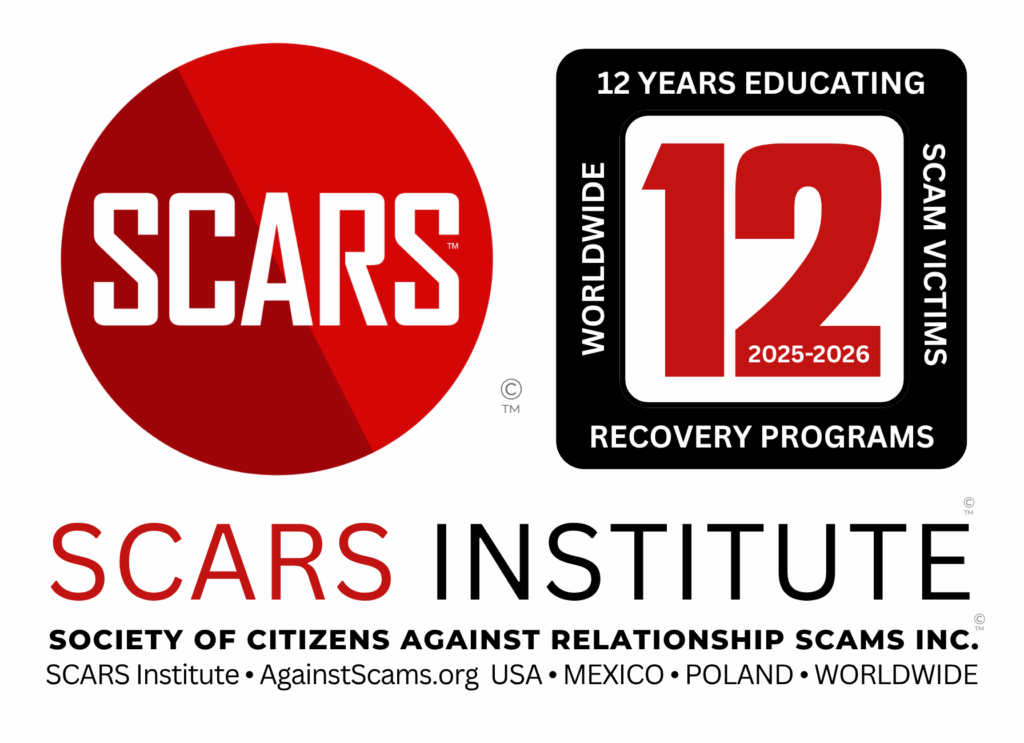







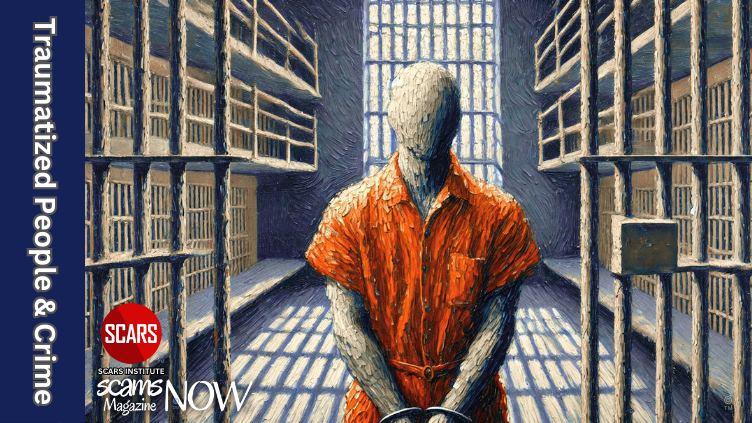



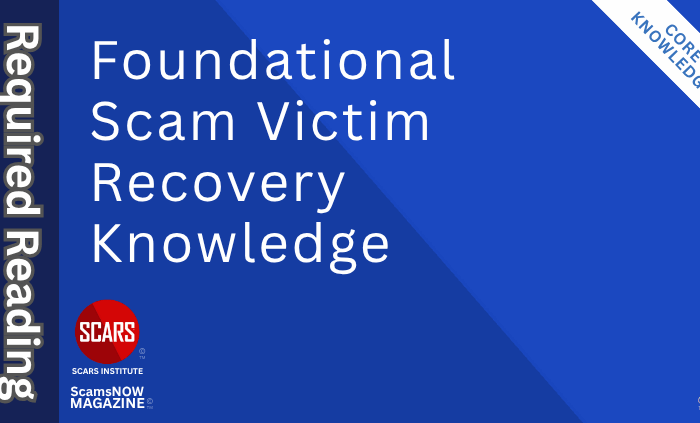

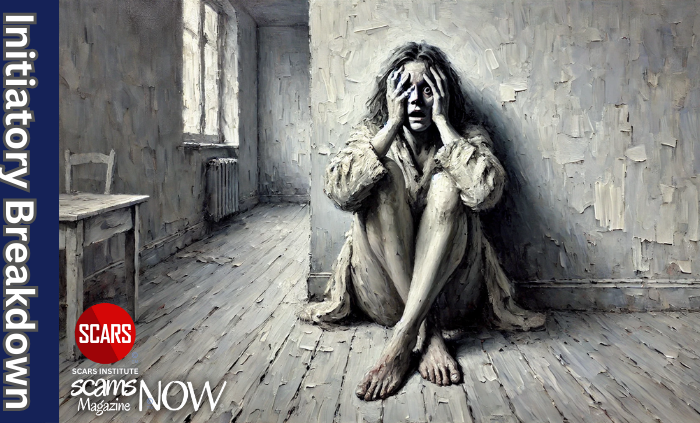


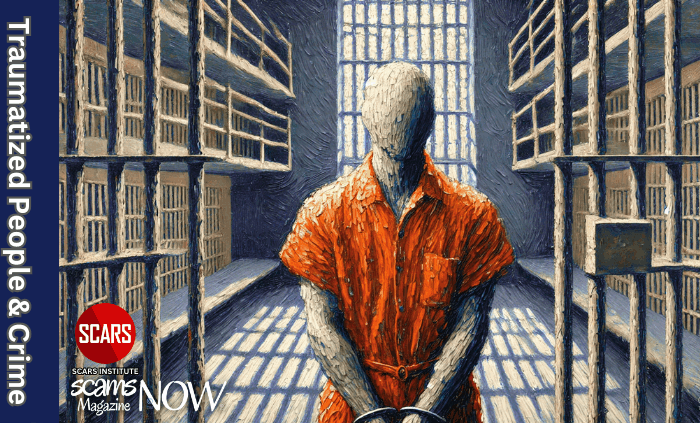

![scars-institute[1] Living in the Invisible Safety Bubble - 2025](https://scamsnow.com/wp-content/uploads/2025/04/scars-institute1.png)
![niprc1.png1_-150×1501-1[1] Living in the Invisible Safety Bubble - 2025](https://scamsnow.com/wp-content/uploads/2025/04/niprc1.png1_-150x1501-11.webp)

Enlightening, thought provoking, and another SCARS article that gives me pause. Recovery is a process and takes time. In a world full of good and evil I sometimes want to stay in “ my bubble” which includes family, friends, and HGTV Reno shows yet I continue to learn how to recognize that my need for safety and security were challenged by the fraud/scam.
We have too many kinds of scams in Japan.
Recently, there are impersonation scam of “fake Cardinal account” gathering fraud donation or offertory through “X” account and e-mail.
It’s always surprising for me how much more “easy-scam” ideas come from Japan.
I thought this was a brilliant article….lots to think about now.